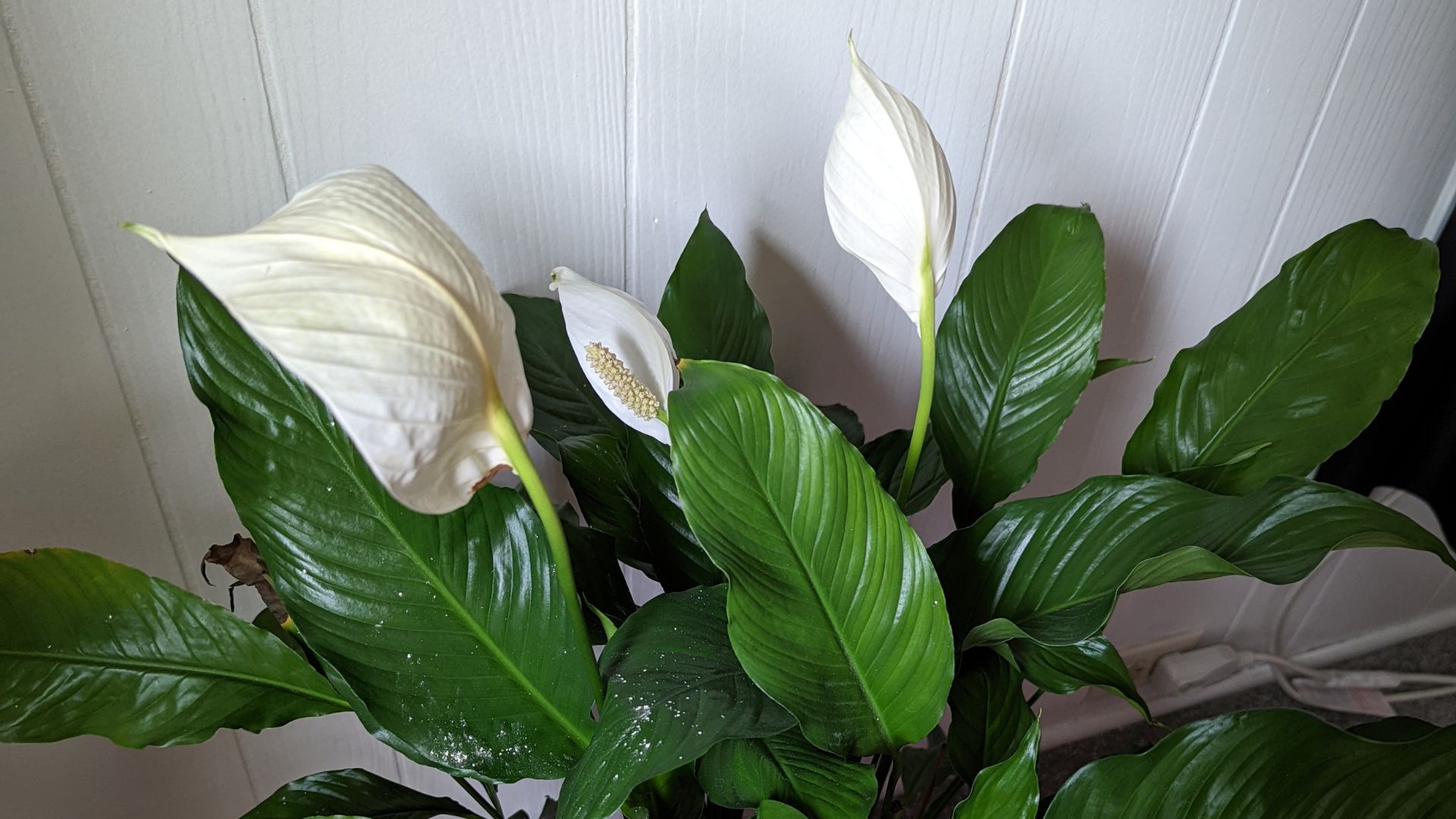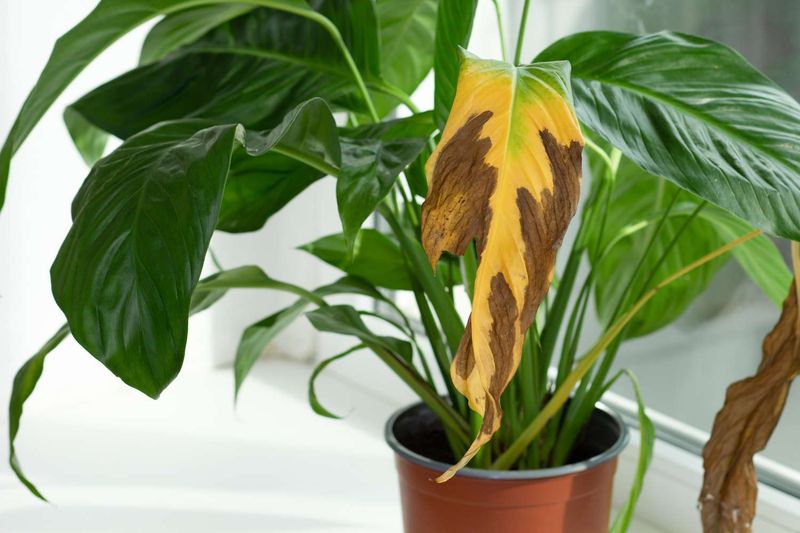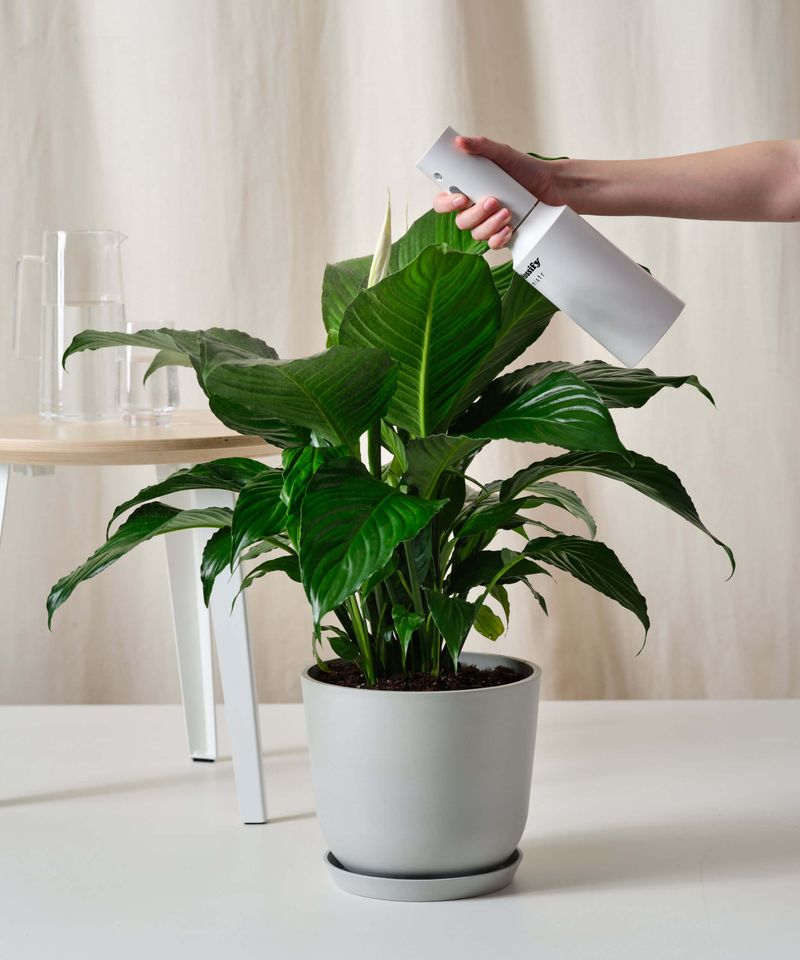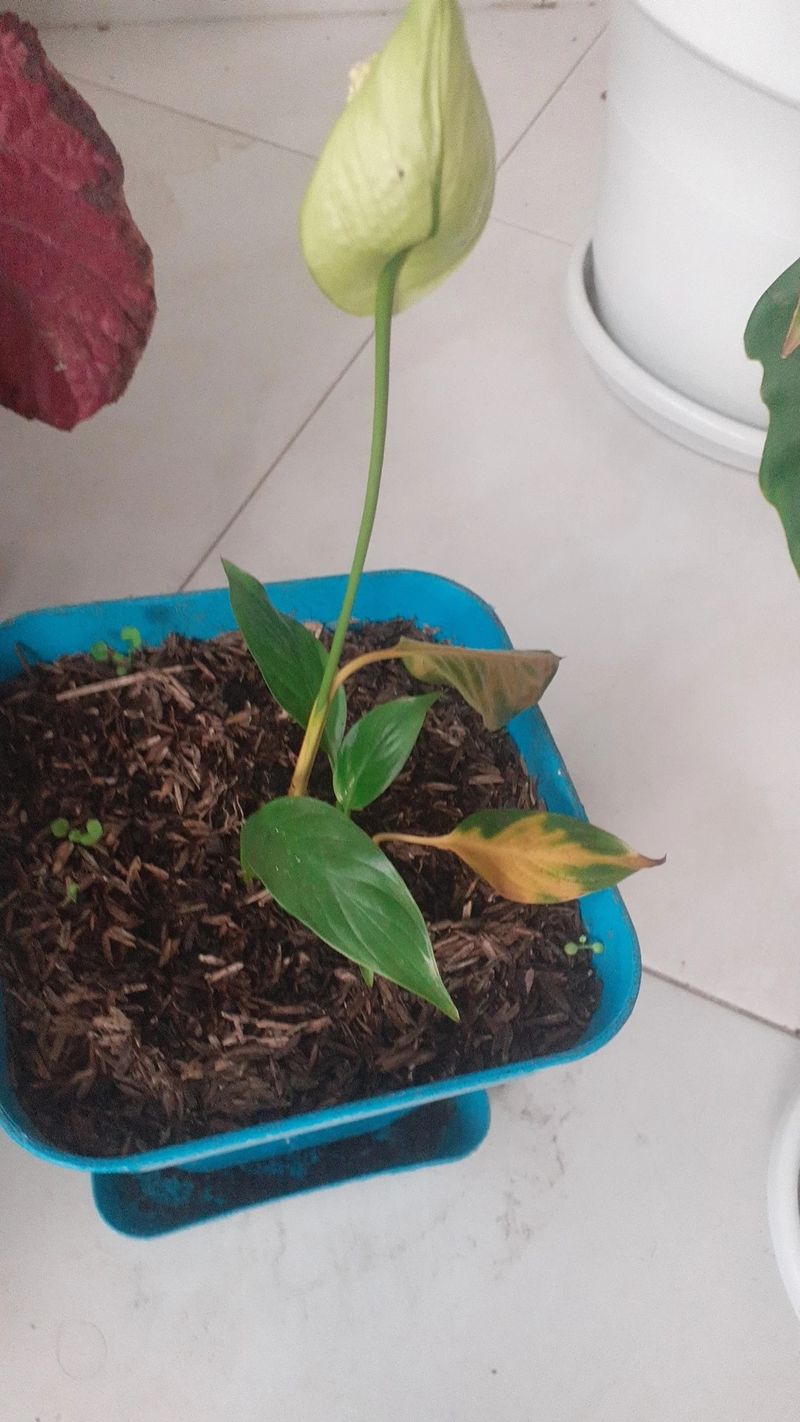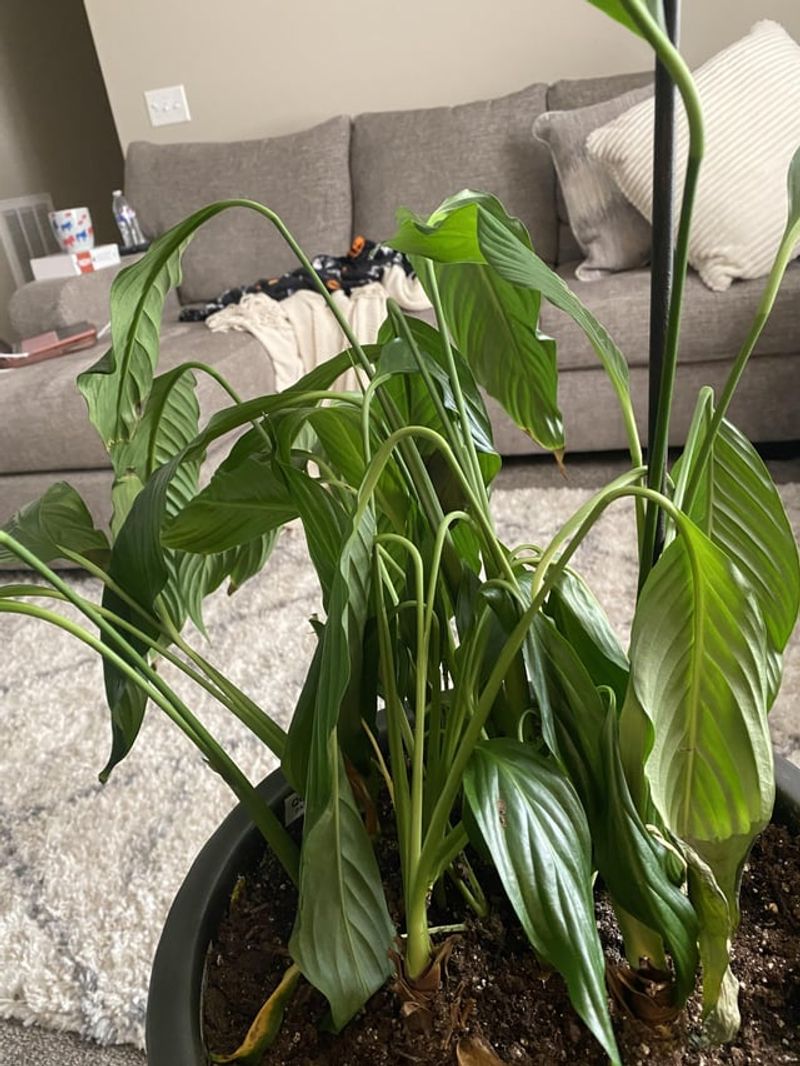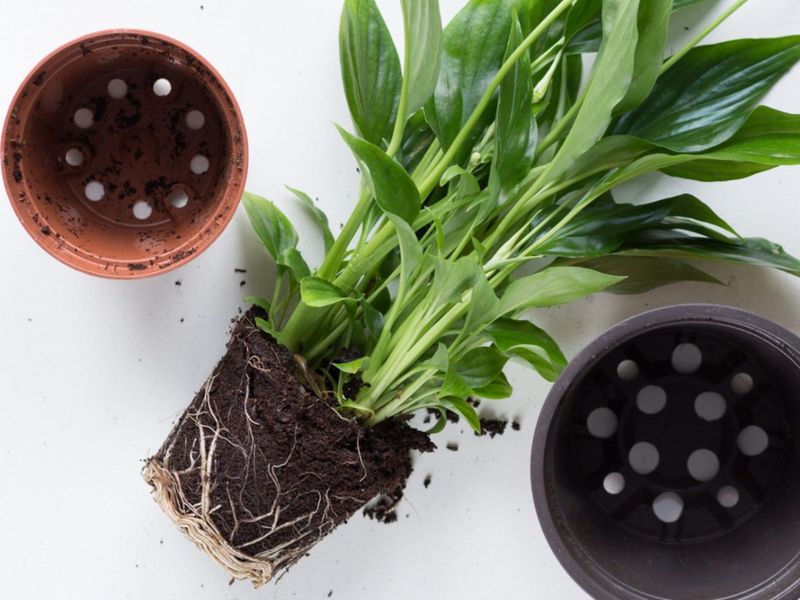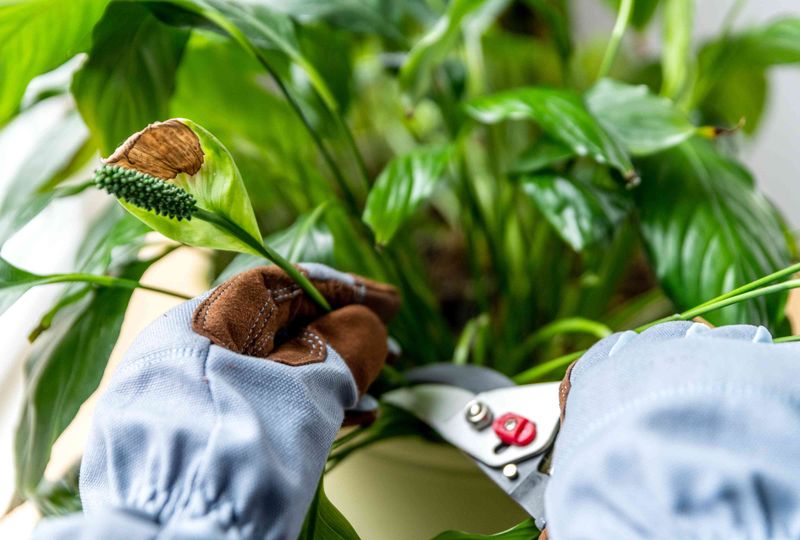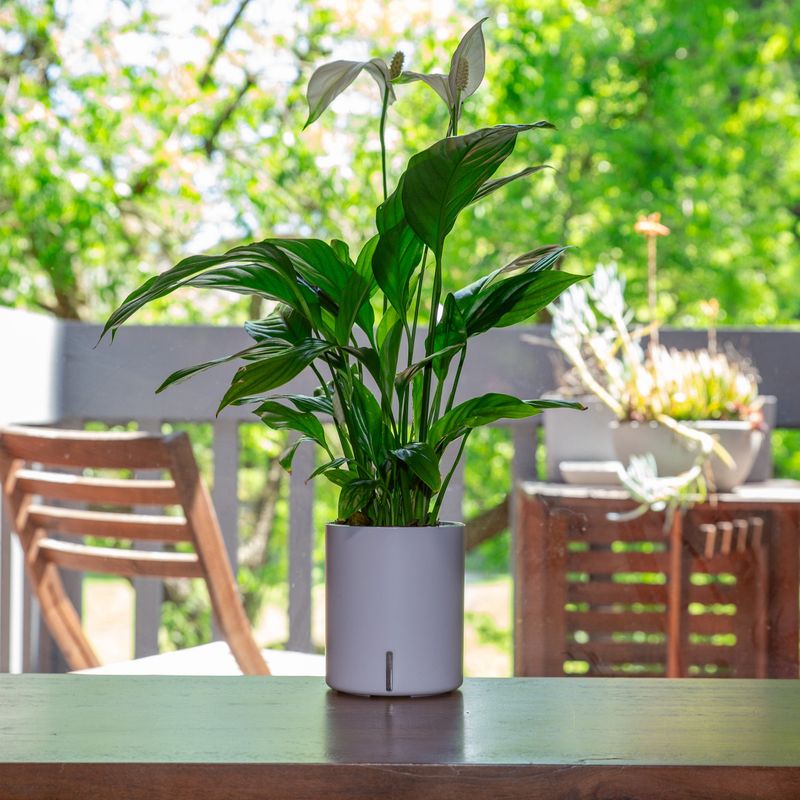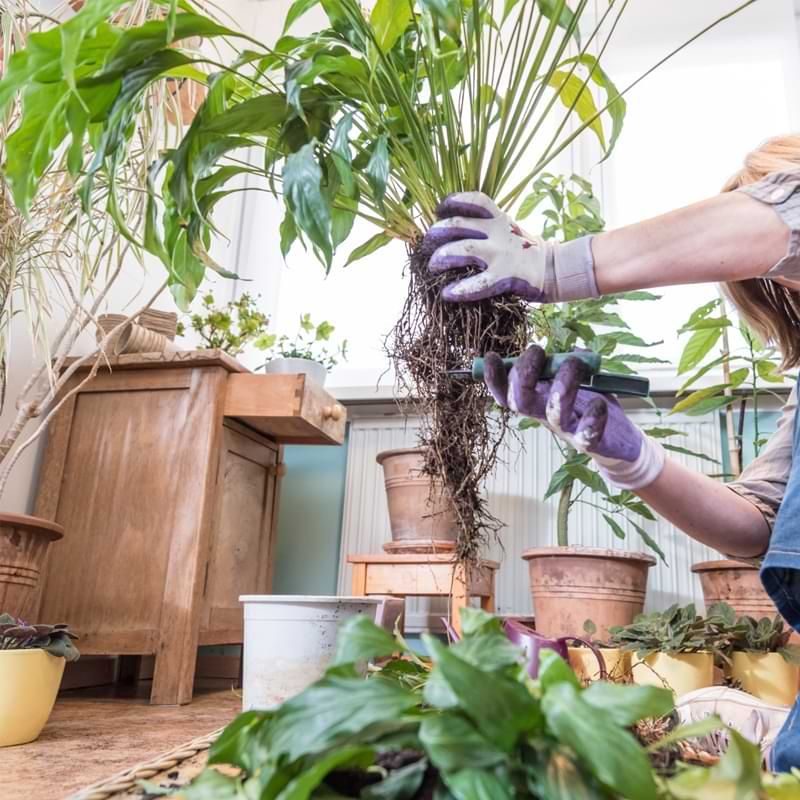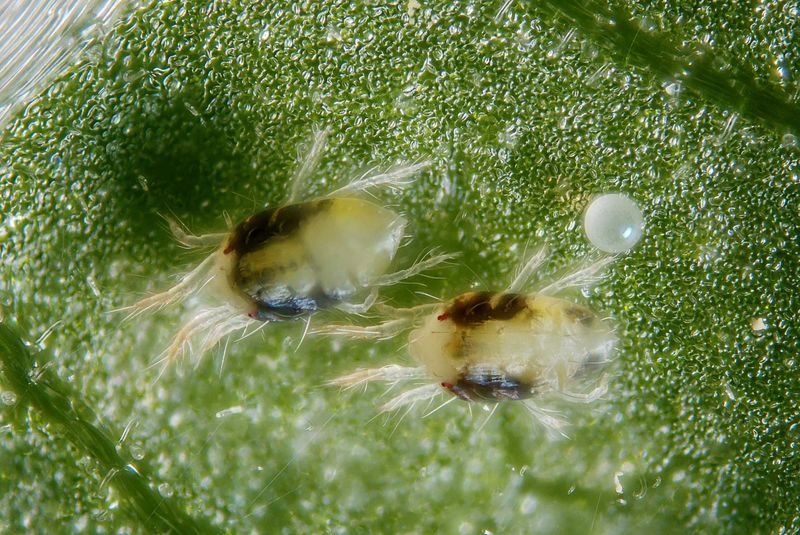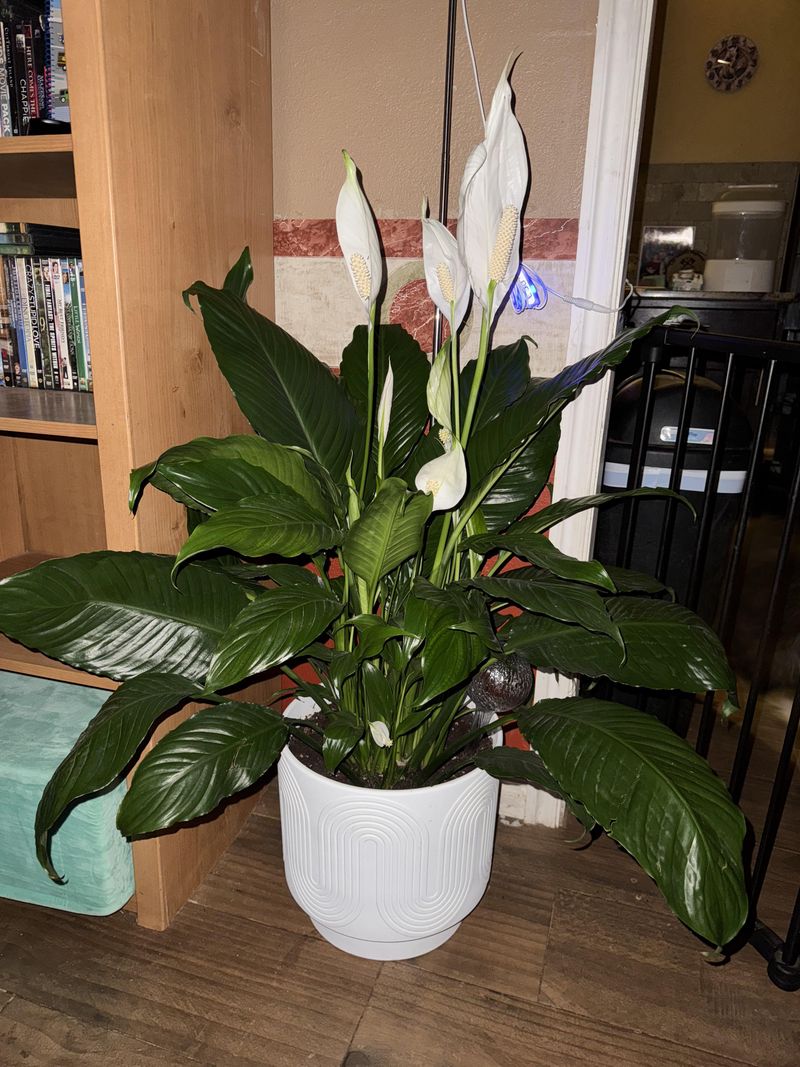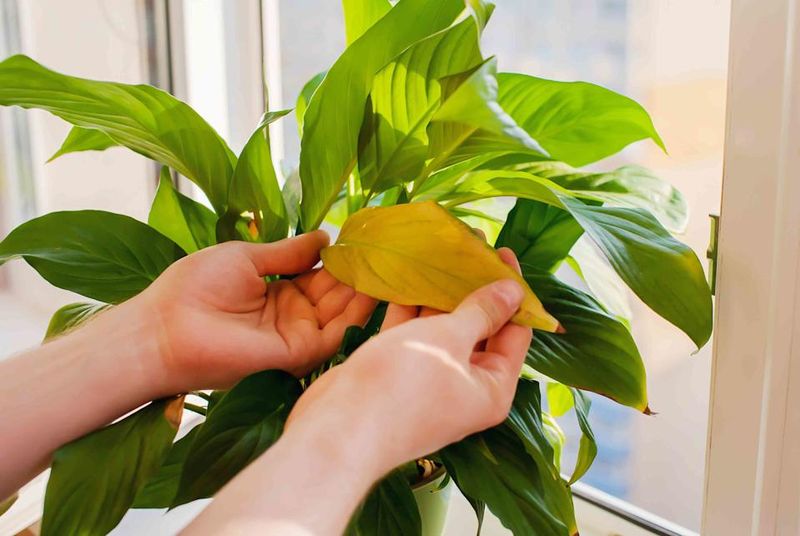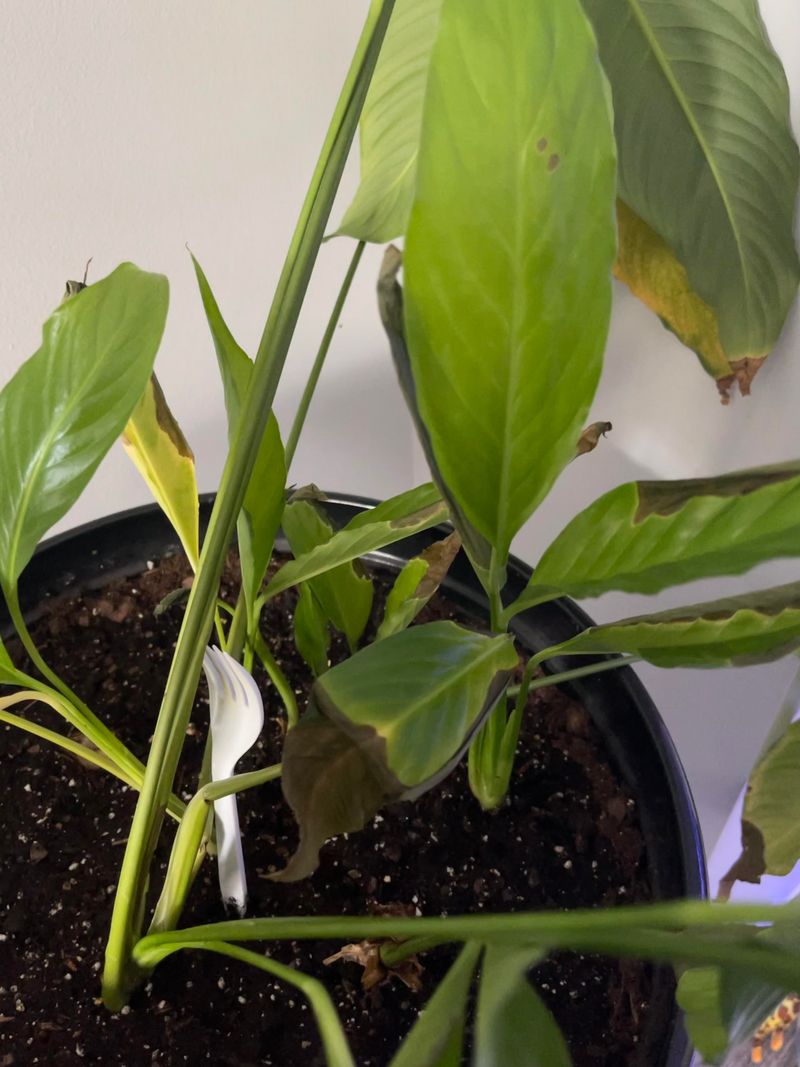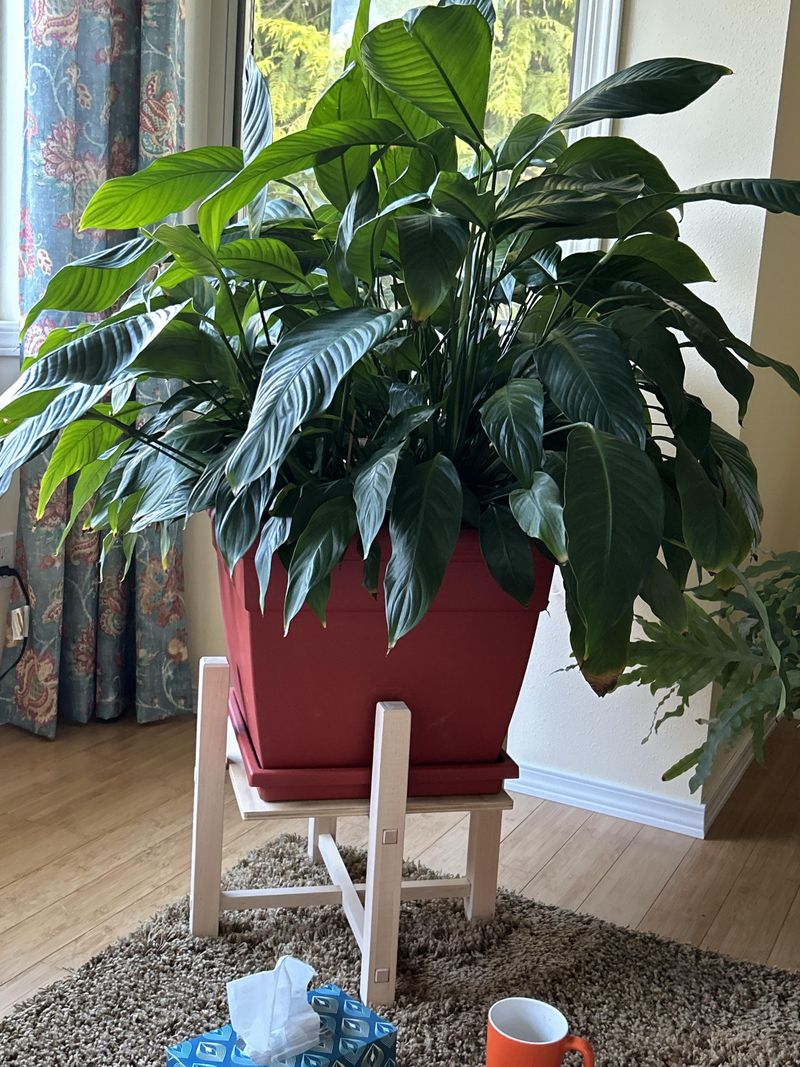Nothing ruins the graceful look of a peace lily faster than those dry, brown tips curling at the edges. I’ve been there—wondering what I did wrong when everything else seemed fine.
It turns out, those crispy ends are often the plant’s way of asking for help, whether it’s too much fluoride in the water or not enough humidity. Once you learn what to watch for, it’s much easier to fix.
With a few simple tweaks, you can usually get your peace lily back to its glossy, vibrant self. And trust me, seeing those new green leaves pop up again feels incredibly rewarding.
1. Adjust Your Watering Schedule
Inconsistent watering is the number one culprit behind those brown tips. Your peace lily prefers soil that stays evenly moist but never soggy.
I’ve found that sticking to a regular watering routine works wonders. Wait until the top inch of soil feels dry before watering thoroughly, then empty any excess from the saucer.
During winter, your plant needs less frequent watering than in summer months when growth is more active and evaporation happens faster.
2. Check Your Tap Water Quality
Fluoride, chlorine, and other chemicals in tap water can damage sensitive peace lily foliage. These additives accumulate in the soil over time and eventually burn leaf tips.
Switch to filtered water, rainwater, or leave tap water out overnight before using it. This simple change often resolves browning issues within a few weeks.
After battling brown tips for months, I switched to collected rainwater and noticed new growth remained perfectly green – proof that water quality matters tremendously!
3. Boost Humidity Levels
Low humidity causes moisture loss through leaf tips, resulting in that crispy brown appearance. Peace lilies are tropical plants that crave higher humidity than most homes naturally provide.
Group your plant with other houseplants to create a mini moisture zone. A pebble tray filled with water placed beneath the pot (without touching the bottom) provides constant humidity.
Avoid placing your lily near heating vents, air conditioners, or drafty windows where dry air circulation will worsen tip browning.
4. Address Temperature Fluctuations
Sudden temperature changes stress peace lilies, causing leaf tips to brown as a defensive reaction. These tropical beauties prefer consistent temperatures between 65-85°F.
Move your plant away from doors, windows, or heating/cooling vents where drafts create temperature swings. The middle of a room often provides more stable conditions.
During winter, keep an eye out for cold damage if temperatures drop below 60°F, especially at night when heating systems might be programmed lower.
5. Resolve Fertilizer Burn
Over-fertilizing creates salt buildup in the soil that burns peace lily roots and eventually shows up as brown leaf tips. These plants need minimal feeding compared to other houseplants.
Flush the soil thoroughly if you suspect fertilizer burn. Run water through the pot for several minutes until it drains clearly, removing excess salts.
For maintenance, fertilize only during growing season (spring through summer) using a balanced houseplant fertilizer at half the recommended strength.
6. Repot Into Fresh Soil
Old, depleted soil becomes compacted and accumulates mineral salts that damage root systems and cause brown tips. Your peace lily’s soil should be refreshed every 1-2 years.
Choose a well-draining potting mix specifically formulated for houseplants, ideally with some peat moss for moisture retention. The fresh medium provides essential nutrients without harmful buildup.
When repotting my own peace lily last spring, I discovered salt-crusted roots that explained months of persistent brown tips – fresh soil solved the problem within weeks.
7. Trim Affected Leaves Properly
Removing brown tips improves appearance and prevents your plant from wasting energy on damaged tissue. Use clean, sharp scissors to trim affected areas without removing entire leaves.
Follow the natural leaf shape when trimming rather than cutting straight across. This creates a more natural appearance that’s less noticeable than blunt cuts.
Sterilize your scissors with alcohol between cuts to prevent spreading any potential pathogens from one leaf to another – a precaution many gardeners overlook.
8. Relocate From Direct Sunlight
Scorched leaf tips result from too much direct sun exposure. Peace lilies thrive in bright indirect light but suffer when sunbeams hit their leaves directly.
Move your plant a few feet away from windows or use sheer curtains to filter harsh rays. Eastern exposures typically provide ideal morning light without afternoon intensity.
Watch for seasonal changes in light patterns – a spot that works perfectly in winter might become too bright in summer as the sun’s angle and intensity shift.
9. Correct Pot Size Issues
An oversized pot holds excess moisture around roots, while a too-small container restricts growth and causes stress. Both situations lead to brown tips through different mechanisms.
Choose a container just 1-2 inches larger than the current root ball when repotting. This provides room to grow without creating a swamp of unused soil.
Always ensure your pot has drainage holes – I learned this lesson the hard way after keeping a lily in a decorative container without drainage, which caused root rot and extensive tip browning.
10. Manage Root Bound Conditions
Severely root-bound peace lilies develop brown tips as cramped roots can’t efficiently absorb water and nutrients. If roots are circling around the bottom or growing out of drainage holes, it’s time to act.
Gently loosen the root ball before repotting, teasing apart any circling roots. This encourages outward growth into fresh soil rather than continuing to spiral.
Some root pruning is beneficial – trim away any dark, mushy roots while preserving healthy white ones to promote rejuvenation and prevent future tip browning.
11. Apply Neem Oil For Pests
Spider mites and other sap-sucking insects can cause brown tips by damaging leaf tissue as they feed. These tiny pests often go unnoticed until significant damage occurs.
Examine leaf undersides with a magnifying glass for webbing or tiny moving dots. Regular application of diluted neem oil creates an inhospitable environment for these unwanted visitors.
Spray both upper and lower leaf surfaces, focusing on areas where leaves join stems – these junctions are favorite hiding spots for pests that can trigger widespread browning.
12. Increase Air Circulation
Stagnant air creates perfect conditions for fungal issues that manifest as brown tips. Improving airflow helps prevent these problems while enhancing overall plant health.
Position a small fan nearby (not blowing directly on the plant) or simply open windows occasionally to refresh the air. Even rearranging nearby furniture can improve circulation patterns.
Avoid crowding your peace lily against walls or other objects that block air movement around foliage – I noticed dramatic improvement after moving mine from a cramped corner to a more open spot.
13. Address Aging Leaves Naturally
Some browning is simply part of the natural aging process. Older leaves eventually yellow and develop brown tips before dying back completely to make way for new growth.
Focus maintenance efforts on newer foliage while accepting that older leaves will eventually decline. This natural cycle isn’t cause for alarm if limited to a few mature leaves.
Remove completely browned leaves at the base to encourage the plant to direct energy toward producing fresh, healthy foliage instead of maintaining declining older leaves.
14. Adjust Home Humidity Systems
Central heating and air conditioning systems dramatically reduce indoor humidity, directly impacting peace lilies. During winter heating season, humidity often drops below 30% – far too dry for tropical plants.
Consider using a humidifier near your plant during dry months. Even a small bedside unit can create a microclimate that prevents those frustrating brown tips.
Track humidity levels with an inexpensive hygrometer, aiming for 50-60% around your peace lily – this simple monitoring tool helped me identify why my plant struggled during certain months.
15. Resolve Transplant Shock
Recently moved peace lilies often develop brown tips as they adjust to new conditions. This transplant shock is temporary but can look alarming as the plant stabilizes.
Maintain consistent care after repotting, avoiding the temptation to overwater or fertilize. Extra attention often compounds stress rather than helping recovery.
Shield newly repotted plants from bright light for a week or two while they establish new root connections. I’ve found this gentle transition period significantly reduces brown tip development after repotting.
16. Identify Water pH Issues
Peace lilies prefer slightly acidic soil conditions, with a pH between 5.8 and 6.5. Water that’s too alkaline prevents proper nutrient absorption, resulting in those telltale brown tips.
Test your water pH with inexpensive test strips available at garden centers. If your water exceeds 7.0, consider acidifying it slightly with a few drops of lemon juice or a specialized pH adjuster.
Collecting rainwater provides a naturally pH-balanced alternative that mimics the slightly acidic precipitation these plants would receive in their native habitat.

